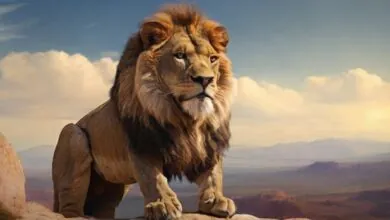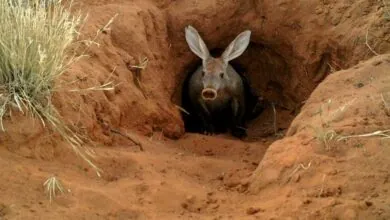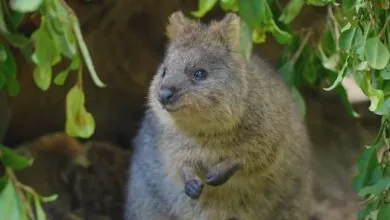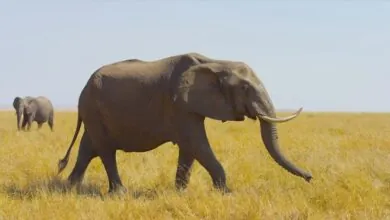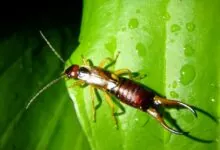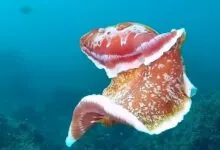The Secret Life of Koala Bear: What They Do When No One’s Watching
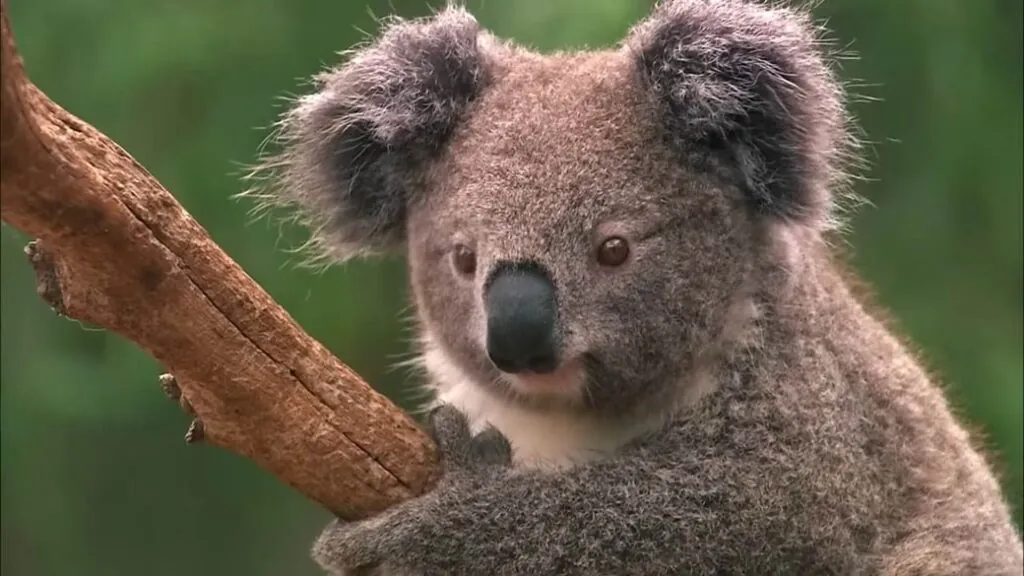
Warm welcome to the awe-inspiring world of koala bear, where eucalyptus-scented breezes weave through the towering trees of Australia and these charming creatures hold court in their leafy sanctuaries. Overlook everything you think you know about these cuddly critters, because beneath that thick fur lies a striking story of marsupial magic and surprising adaptations. Ready? Let’s go!
| Kingdom | Phylum | Class | Order | Family | Genus | Scientific Name | |||
| Animalia | Chordata | Mammalia | Diprotodontia | Phascolarctidae | Phascolarctos | Phascolarctos cinereus |
Origin and Evolution
Evolutionary History
Over the span of Oligocene (34-23 million years ago), fossil evidences hint at diverse koala ancestors with broader diets, munching on leaves beyond eucalyptus.
With respect to koala origin, in Miocene era, (23-5 million years ago), as Australia’s climate dried, the upswing in eucalyptus forests posed a unique challenge. Koala specialized, evolving an intricate digestive system to cope with the toxic and low-nutrient leaves.
Moving into Pleistocene epoch (2.6 million years ago – present), the arrival of ice ages drastically varied Australia’s landscape, resulting in the extinction of a plethora of koala species. Speaking of koala origin, it preserved through climate change and became the sole survivor of its family line.
Genetic Composition and Diversity
Albeit their cuddly façade, koala bears harbor camouflaged genetic secretes. Research unfolds low genetic diversity within the species, making them susceptible to inbreeding and population downturn.
Environmental Adaptations
In conjunction with koala bear adaptations, these species boast sharp claws and opposable thumbs for expert maneuvering, while their roughened toe pads guarantee a tight grip on branches. To tackle with eucalyptus’ toxicity, they are endowed with an unparalleled gut microbiome that detoxifies the leaves and extracts meager nutrients.
Distribution and Population
Geographic Range
In terms of the koala distribution, this very day, it clings to scattered patches throughout eastern Australia, their range spanning from the tropical rainforests of northern Queensland to the coastal woodlands of South Australia.
At one point, the species roamed freely across extended stretches of mainland Australia, with their range extending well into the inland plains.
Population Dynamics
As for as koala bear population is concerned, it’s a tricky task to pinpoint the exact figures, but contemporary figures range betwixt 43,000 and 100,000 individuals. Queensland boasts the highest number, with an estimated 60,000 koalas calling its eucalyptus forests home. New South Wales follows with approximately 10,000, while South Australia and Victoria harbor smaller but significant populations.
Geography
| Continent(s) | Australia |
| Countries | Australia |
| Bio-geographical Realms | Australasian realm |
| Biome | Eucalypt woodland and forest (primarily dry sclerophyll forests and woodlands) |
| Climate Zones | Subtropical, temperate, and semi-arid |
Habitat
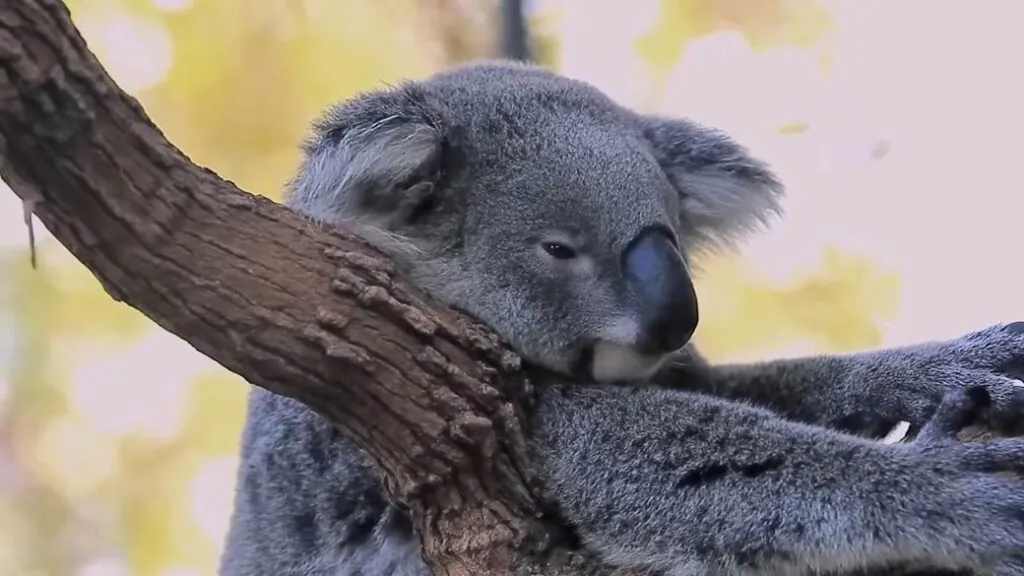
Habitat Preferences
Being eucalyptus connoisseurs, their lives revolve around these aromatic trees and the koala bear habitat preferences are tightly woven with the scent of gum leaves. Their hearts truly belong to coastal dry sclerophyll forests, riparian forests and open woodlands.
Within these broader ecosystems, koalas showcase discerning tastes. They gravitate towards particular microhabitats, including mid-to-upper canopy layers, open patches with scattered trees and areas with diverse eucalyptus species. For more insights about koalas, their biology, habitat, and conservation status, you can visit the Australian Koala Foundation (AKF).
Habitat Utilization Patterns
Speaking of koala habitat utilization patterns, research enlightens us about their daily rhythms and preferences:
The uakari and koala bear, though residing in different continents, share a common reliance on a specialized diet, with the Uakari thriving on a predominantly fruit-based diet in the Amazon rainforest, while the Koala Bear sustains itself primarily on eucalyptus leaves in the Australian bush.
5 Koala Fun Facts
Appearance
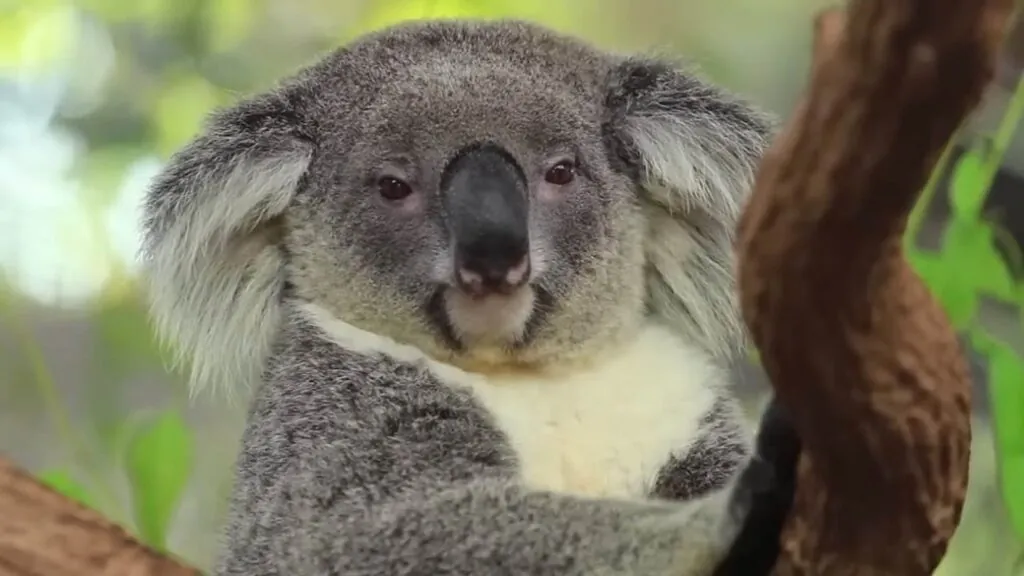
Physical Characteristics
Sexual Dimorphism
In conjunction with the difference between male and female koalas, it’s more than just size. Male koalas tend to be larger and sturdier, sporting broader faces and a conspicuous scent gland on their chest utilized for marking territory and attracting mates. On the flip side, females have a smoother chest and a backwards-facing pouch.
Ontogenetic Development
Koalas experience an awe-inspiring transformation, from tiny, hairless joeys to fluffy adolescents. Over the span of first six months, joeys rest merely on their mother’s milk, little by little venturing out for eucalyptus nibbles.
Between 6 and 12 months, they become independent eaters, sporting a full coat and venturing further, polishing their climbing skills. By one to two years, they reach sexual maturity, featuring the full glory of their adult appearance.
Anatomy
| Color(s) | Ash grey to silver-grey, with lighter fur on the belly |
| Tongue | Long, rough, and prehensile, adapted for eating eucalyptus leaves |
| Claws | Sharp and curved, used for climbing trees |
| Mouth | Small, with specialized teeth for chewing eucalyptus leaves |
| Jaw | Powerful, adapted for grinding tough plant material |
| Teeth | Diphyodont (two sets of teeth), with specialized molars for grinding |
| Nose | Pink and hairless, with a good sense of smell |
| Feet | Five-toed, with opposable thumbs on the hind feet for grasping |
| Skeleton | Lightweight and arboreal, with strong limbs for climbing |
Reproduction and Life Cycles
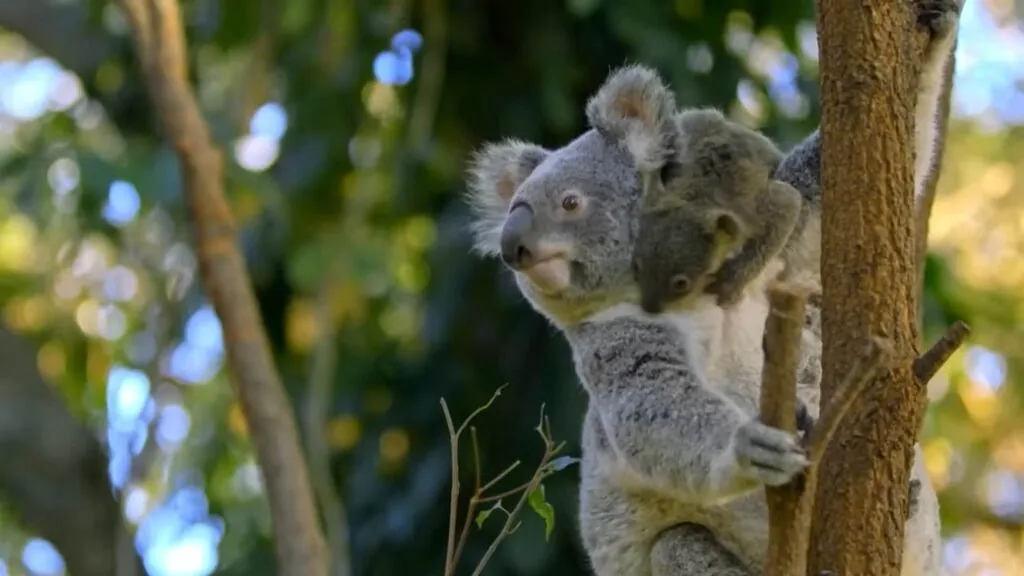
Mating System
The koala’s courtship involves scents and vocalizations. Males boast conspicuous chest glands that emit musky aromas, drawing in potential mates and marking territory.
During koala breeding season – normally summer and autumn – the species serenade the eucalyptus canopy with loud bellows. Female koalas, receptive to these olfactory and auditory cues, opt for their partner built upon scent strength and bellow frequency. Speaking of koala mating habits, they tend to be polygamous, seeking to pass on their genes to as many females as possible.
Reproductive Biology
Concerning koala bear reproduction, females invest heavily in their offspring, producing only one tiny joey every year or two. Koala gestation lasts a mere 35 days, leading to a hairless, pink bean of a creature weighing less than a gram.
Life Cycle Stages
Koala life cycles are somewhat distinctive, each marked by prominent growth and development:
As for as koala lifespan is concerned, individuals reach 10 to 12 years in the wild and even up to 20 years in captivity.
Mating Habits
| Mating Behavior | Solitary animals |
| Reproduction Season | Primarily between late spring and early summer (September to January) |
| Litter Size | Single joey in most cases, twins are very rare |
| Gestation Period | 35 days (shortest among marsupials) |
| Baby Carrying | Joey stays in the mother’s pouch for 6 months, then hitches a ride on her back for another 6 months |
| Independent Age | Around 12 months |
| Baby Name | Joey |
Diet and Lifestyle
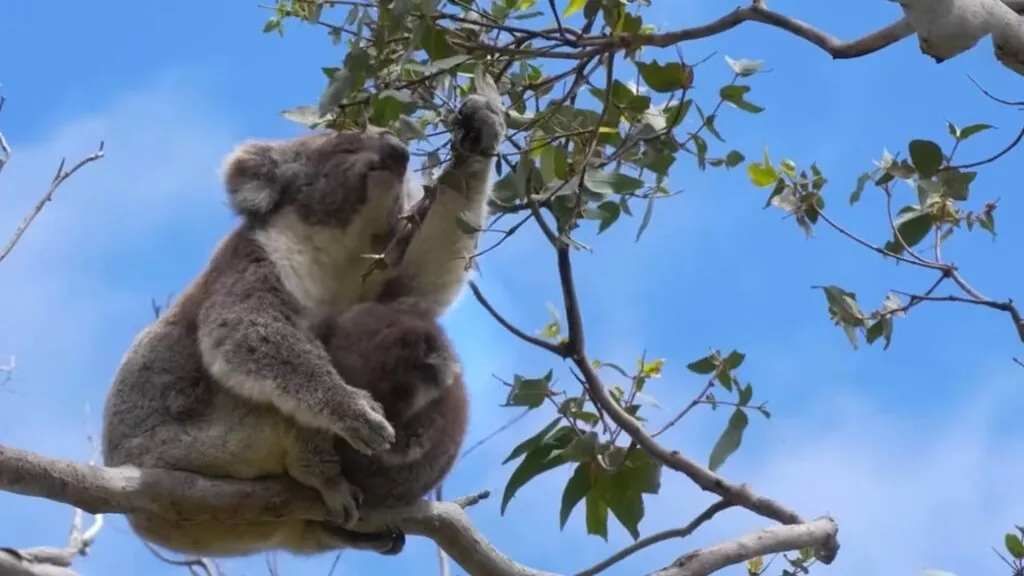
Feeding Ecology
When it comes to the koala bear diet, it is herbivore. They’re eucalyptus specialists, chiefly consumers that are contingent on these fibrous, low-nutrient leaves for sustenance. It’s koala digestive system that compete with gut microbes that detoxify the toxins and extract meager nutrients.
Foraging Strategies
Koalas utilize their keen sense of smell fruitful for sniffing out the best trees, oftentimes relying on particular eucalyptus species within their territories. Their sharp claws and opposable thumbs let them navigate the branches with dexterity and their roughened toe pads ensure a firm grip.
Diurnal Activity Patterns
Koala bears spend most of their daylight hours snoozing high in the branches. But come nightfall, they transit into efficient foragers. Approximately, 70% of their feeding activity occurs under the cloak of darkness.
Social Structure
Koalas, for the most part, are solitary creatures, where males guard large territories that overlap the ranges of several females. Nonetheless, koala behavior in terms of sociality makes them engage in distinct doings, such as scent marking, vocalization and allogrooming.
Threats and Conservation
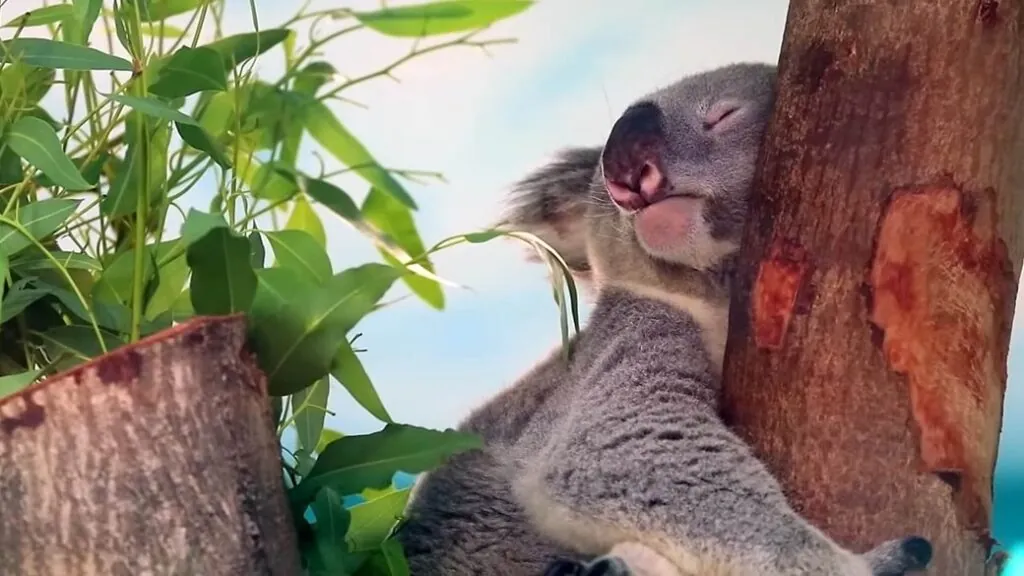
Koalas’ future hangs in the balance, threatened by a plethora of factors that push them towards vulnerability and endangerment. In February 2022, the Australian government shifted its official designation from “Vulnerable” to “Endangered” by IUCN. While regional variations on the part of koala conservation status exist, with Queensland maintaining a “Vulnerable” status.
The threats and challenges koalas encounter are interwoven, forming a web of danger, including habitat loss, chlamydia, vehicle collisions, dog attacks and climate change.
Relationship with Humans
Cultural Significance and Symbolism
On the other side of their adorable charm, koalas hold a deep cultural importance within Australia. Across indigenous culture, they play a crucial role in creation stories, appearing as wise sprits interlinked with the land. In broader Australian culture, the species have earned the status of national icons, embellishing everything from tourist souvenirs to coins.
The species’ cuddly charm and unique Australian spirt have resonated with artists, moviemakers and auther.
Economic Importance
In the annals of time, koalas encountered exploitation due to their thick fur. In early 20th century, fur trade resulted in a drastic downturn in their population, necessitating strict protection measures. Koala-related tourism generates more than $1 billion annually for the Australian economy and supports around 3,000 jobs.
Unique Characteristics
Forge a path through an intriguing journey as we unfold fascinating facts about Koala bears – truly captivating animals that start with K. Join us in shedding light on their remarkable rundown!
| Common Name | Koala |
| Other Name(s) | Teddy bear, gum bear, grey koala, furry koala |
| Number of Species | 1 (Phascolarctos cinereus) |
| Population Size | Estimated 30,000 – 100,000 (listed as vulnerable) |
| Lifespan | In the wild: 10-15 years; in captivity: Up to 20 years |
| Weight | Males: 8-12 kg; Females: 6-8 kg |
| Length | 60-85 cm (23-33 in) |
| Top Speed | 20-25 km/h (12-15 mph) when sprinting, but typically slow-moving |
| Predator | Dingoes, owls, large snakes, humans (mostly through habitat loss) |
| Prey | Eucalypt leaves (primary source) |
| Most Distinctive Feature | Thick, fluffy grey fur, round ears and large black eyes |
FAQs
